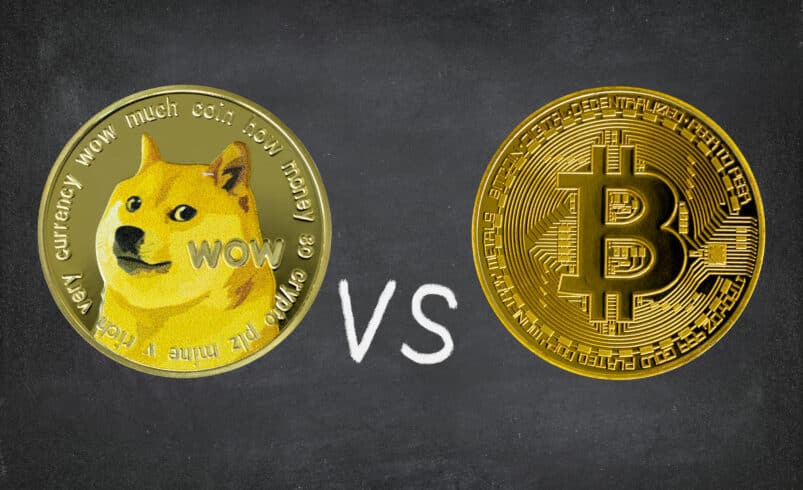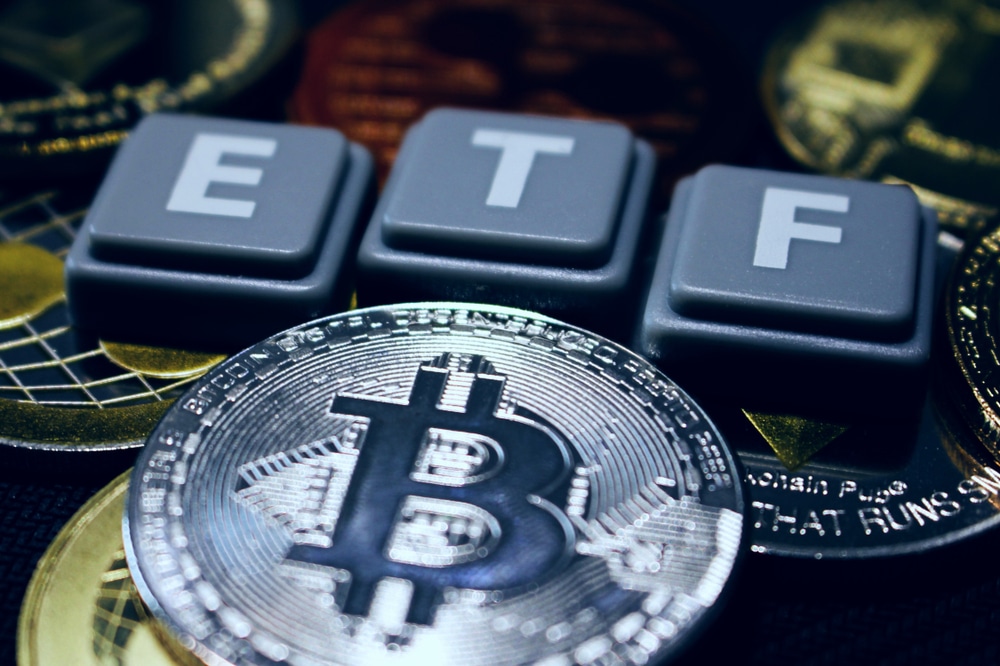Dogecoin vs. Bitcoin: An In-Depth Analysis of Distinctive Features

Understanding Dogecoin
Dogecoin, often categorized as an Altcoin, was conceived by Jackson Palmer and Billy Markus in 2013. Originally crafted as a humorous take on the prevalent “Doge” meme, this cryptocurrency maintains its distinct blockchain architecture. Dogecoin’s foundation is akin to the blockchain frameworks of Litecoin and Ethereum, although there are slight alterations, especially in the proof-of-work system it utilizes to validate transactions.
Contrasting Dogecoin and Bitcoin
Bitcoin and Dogecoin represent divergent facets of the cryptocurrency spectrum. Bitcoin, regarded as a renowned digital currency, serves as a recognized mode of payment in various nations and international sectors. Conversely, Dogecoin still needs to achieve the extensive infrastructure or credibility akin to Bitcoin. Additionally, their market capitalizations are notably different. While Bitcoin’s circulation is capped, ensuring a restricted supply, Dogecoin’s issuance is unlimited, potentially leading to a continuous deflationary trend. Furthermore, their underlying blockchain networks differ. Bitcoin operates on a dedicated blockchain, whereas Dogecoin is anchored on a variant of the Ethereum blockchain with modifications to transaction monitoring and record-keeping.
Dogecoin’s Merits Relative to Bitcoin
The preference between Dogecoin and Bitcoin hinges on individual requirements. For those prioritizing swift transactions and minimal fees, Dogecoin, with its Ethereum-derived blockchain, may be preferable. In contrast, for broader acceptance, versatility, and intrinsic value, Bitcoin takes the lead, given its extensive adoption and availability. From an investment perspective, Bitcoin’s valuation far surpasses that of Dogecoin. While Dogecoin’s valuation has largely remained modest, Bitcoin’s price oscillates considerably, reflecting its widespread adoption and constrained supply. Dogecoin’s potential for growth might be limited due to its infinite supply and moderate adoption rate.
Price Trajectories of Dogecoin and Bitcoin:
Historically, the valuation trajectories of these cryptocurrencies diverge substantially. Dogecoin’s pinnacle value reached 74 cents from its initial market value of 0.017 cents, signifying a staggering rise during the cryptocurrency surge. Concurrently, Bitcoin’s value escalated impressively, commencing from $327 and reaching a peak exceeding $61k. Both have exhibited significant appreciation, with early adopters reaping considerable rewards. Yet, Bitcoin’s widespread acceptance renders it more valuable.
Comparing the Mining Processes of Dogecoin and Bitcoin
Cryptocurrency mining, a prevalent method to procure digital coins, involves computational power and high-speed internet to decipher intricate mathematical problems, validate transactions, and earn fractional coins. Though Bitcoin is widely acknowledged, mining it is more labor-intensive than Dogecoin. Bitcoin’s transaction validation typically spans around ten minutes per block, unlike Dogecoin’s faster rate of one block per minute. Owing to Dogecoin’s derivation from the Ethereum blockchain, it can be mined more rapidly than Bitcoin.
Frequently Asked Questions (FAQs)
Will Dogecoin ever mirror Bitcoin’s growth?
The prospects of Dogecoin emulating the meteoric rise of Bitcoin are considered quite slim due to several factors. Firstly, Bitcoin’s established reputation and widespread acceptance make it inherently more in demand than Dogecoin.
Furthermore, the unlimited supply of Dogecoins contrasts sharply with the limited supply of Bitcoins, which inherently boosts Bitcoin’s value as demand has the potential to surpass its fixed supply. Additionally, Dogecoin’s design as an inflationary coin contrasts with Bitcoin’s deflationary nature, creating distinct growth trajectories.
Finally, a prevailing sentiment among established investors suggests that significant “crypto surges” might be in the past, with only foundational coins like Bitcoin and Ethereum likely to witness substantial growth, casting doubts on the future of meme-based tokens like Dogecoin.
Does Dogecoin hold any investment merit?
While Dogecoin began as a more whimsical, meme-centric coin compared to stalwarts in the crypto realm, it hasn’t deterred some from maintaining it in their investment mix. The coin’s affordability allows for the acquisition of large quantities, and even minor price shifts can yield quick returns. Nonetheless, the inherent unpredictability of the crypto market, underscored by events like the 2018 crash, means prudent investors might maintain only a minimal Dogecoin presence in their portfolios as a protective measure.
What are the potential drawbacks of Dogecoin?
Dogecoin, despite its recognition, has its challenges, both as a digital currency and as an investment avenue. Some of the concerns potential investors should ponder include:
- Limited Practicality: Even though Dogecoin ranks among the top cryptocurrencies by value, it offers limited tangible utility. Primarily driven by speculation and its meme origins, its stability can be questioned, especially when compared to more versatile coins like Bitcoin and Ethereum.
- Unlimited Supply: The absence of a supply cap for Dogecoin might inhibit its growth potential, as supply can perpetually outmatch demand.
- Past Performance Indicators: Historically, Dogecoin hasn’t shown remarkable growth. For instance, during the 2017 crypto upswing, it barely touched a value of 61 cents per unit, marking it as a relatively low-value entity during its peak phase.
Is Dogecoin suitable for long-term investment?
Given the current dynamics of the cryptocurrency market and the inherent properties of Dogecoin, it appears challenging for the coin to offer sustained long-term benefits. While the volatile nature of cryptocurrencies can present opportunities for short-term diversification, Dogecoin’s potential for enduring growth seems limited, especially when juxtaposed against established cryptocurrencies like Ethereum, Bitcoin, and Solana.
DISCLAIMER: It's essential to understand that the articles on this site are not meant to serve as, nor should it be construed as, advice in legal, tax, investment, financial, or any other professional context. You should only invest an amount that you are prepared to lose, and it's advisable to consult with an independent financial expert if you're uncertain. To obtain more information, kindly examine the terms of service and the assistance and support resources made available by the issuing or advertising entity. Our website is committed to delivering accurate and unbiased news, yet it's important to note that market conditions may change rapidly. Also, be aware that some (but not all) articles on our site are compensated or sponsored.








